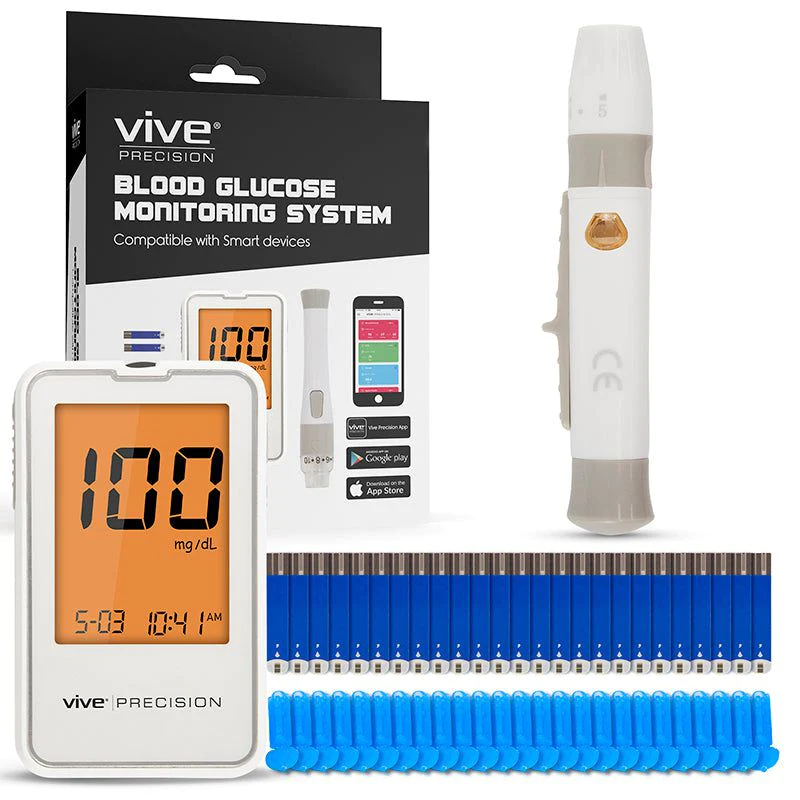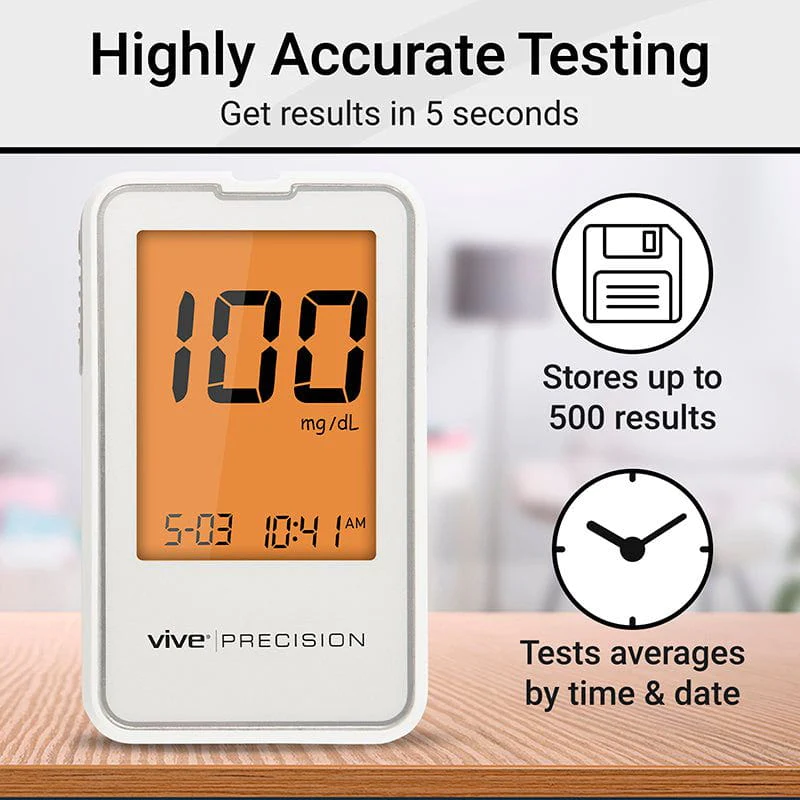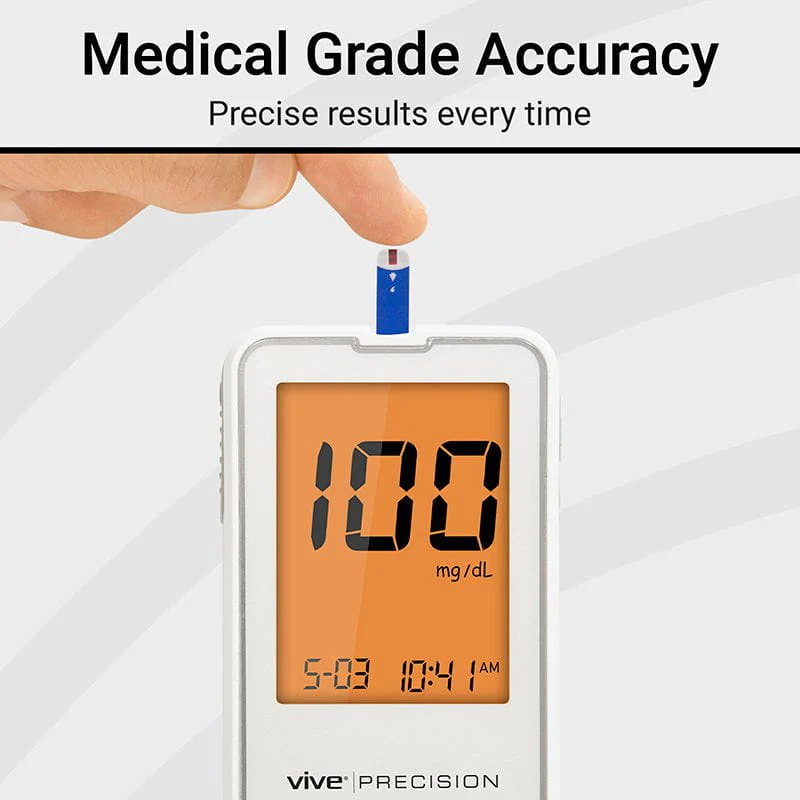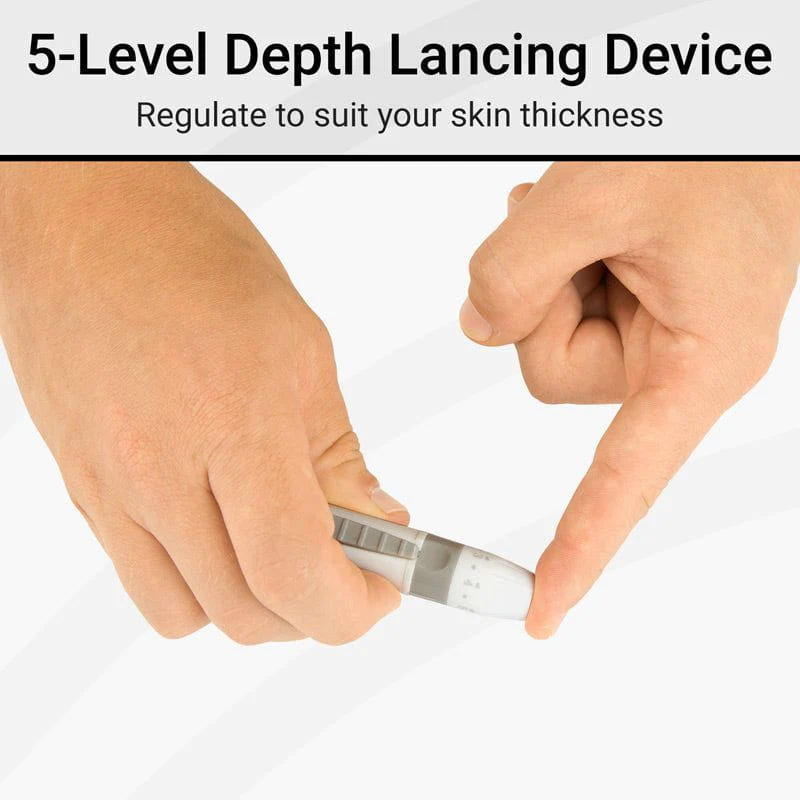Address
304 North Cardinal
St. Dorchester Center, MA 02124
Work Hours
Monday to Friday: 7AM - 7PM
Weekend: 10AM - 5PM
Address
304 North Cardinal
St. Dorchester Center, MA 02124
Work Hours
Monday to Friday: 7AM - 7PM
Weekend: 10AM - 5PM










Original price was: $50.99.$0.00Current price is: $0.00.
Managing diabetes effectively begins with knowledge—and one of the most powerful tools in a diabetic’s toolkit is the Blood Glucose Monitoring System. This device allows individuals to track their blood sugar levels in real time, helping them make informed decisions about food, exercise, medication, and overall lifestyle. Whether you have type 1, type 2, or gestational diabetes, regular monitoring is key to maintaining stable glucose levels and preventing serious complications.
A Blood Glucose Monitoring System (BGMS) is a device used to measure the concentration of glucose in the blood. These systems typically include:
A glucometer (the main device),
Test strips that react with blood, and
A lancing device to obtain a blood sample.
More advanced systems, such as Continuous Glucose Monitors (CGMs), provide real-time readings without finger pricks and can alert users to high or low glucose levels.
Fast and Accurate Readings
Most devices give results in under 5 seconds with a small drop of blood.
Memory Storage
Can store previous readings and display trends over days or weeks.
Portable and Lightweight
Compact designs make it easy to carry anywhere.
Digital Integration
Many devices connect to smartphones or apps for data tracking and sharing with healthcare providers.
Minimal Blood Sample Needed
Typically requires just 0.5 to 1 microliter of blood.
Better Diabetes Control
Allows users to track how food, stress, or exercise affects blood sugar.
Prevents Complications
Reduces the risk of severe hypo- or hyperglycemia by identifying fluctuations early.
Supports Medication Adjustments
Helps healthcare providers tailor insulin doses or medication schedules.
Encourages Healthy Habits
Frequent testing can motivate users to eat healthier and stay active.
Improved Emergency Awareness
Immediate feedback helps take corrective action if glucose levels are too high or low.

Standard Glucometers
Requires finger pricking
Ideal for daily checks and affordability
Continuous Glucose Monitors (CGMs)
Sensor worn on the body (arm or abdomen)
Tracks glucose continuously and sends data to a receiver or smartphone
Flash Glucose Monitors
Sensor-based system where users scan the sensor to get a reading
| Feature | Details |
|---|---|
| Test Time | 3–5 seconds |
| Sample Size | 0.5–1.0 microliter |
| Memory Storage | 100–1000+ readings |
| Battery Life | Several months to a year |
| Data Connectivity | Bluetooth, USB, mobile apps |
| Accuracy | ±15% of lab results (ISO standard) |
Blood Glucose Monitoring Systems empower people living with diabetes to take control of their health. With a range of devices—from basic fingerstick meters to high-tech CGMs—everyone can find a solution that fits their lifestyle and needs. Monitoring isn’t just about numbers; it’s about understanding your body and making choices that support long-term well-being.
By staying informed and consistent, people with diabetes can enjoy fuller, healthier lives with fewer complications.
1. How often should I check my blood sugar?
It depends on your condition and treatment plan. Some may test once a day, while others (especially insulin users) may test multiple times.
2. What is a normal blood sugar level?
For most non-diabetics, fasting levels should be between 70–99 mg/dL. Diabetics aim for individualized targets—often between 80–130 mg/dL before meals.
3. Is testing painful?
With modern lancets and proper technique, finger pricks are minimally painful. CGMs avoid finger pricks entirely.
4. Can I use someone else’s meter or strips?
No. Always use your own meter and compatible test strips for accurate readings and to avoid infection.
5. How long do test strips last?
Each strip has an expiration date. Using expired strips can lead to inaccurate results.
6. What should I do if my readings are too high or low?
Follow your treatment plan. If unsure, contact your healthcare provider immediately.
7. Are these devices covered by insurance?
Most insurance plans and Medicare cover blood glucose monitors and strips for diabetic patients.
8. What is a CGM, and how does it work?
A Continuous Glucose Monitor uses a tiny sensor under the skin to measure glucose levels every few minutes, sending data to a device or app.
9. Can I use a BGMS without a prescription?
Basic glucometers are available over the counter, but CGMs usually require a prescription.
10. What is the most accurate BGMS?
Accuracy varies by model. Look for devices that meet ISO 15197:2013 standards and have positive user reviews.
Looking for the best Blood Glucose Monitoring System? Explore our collection today and find the perfect fit for your needs!
Reviews
There are no reviews yet.